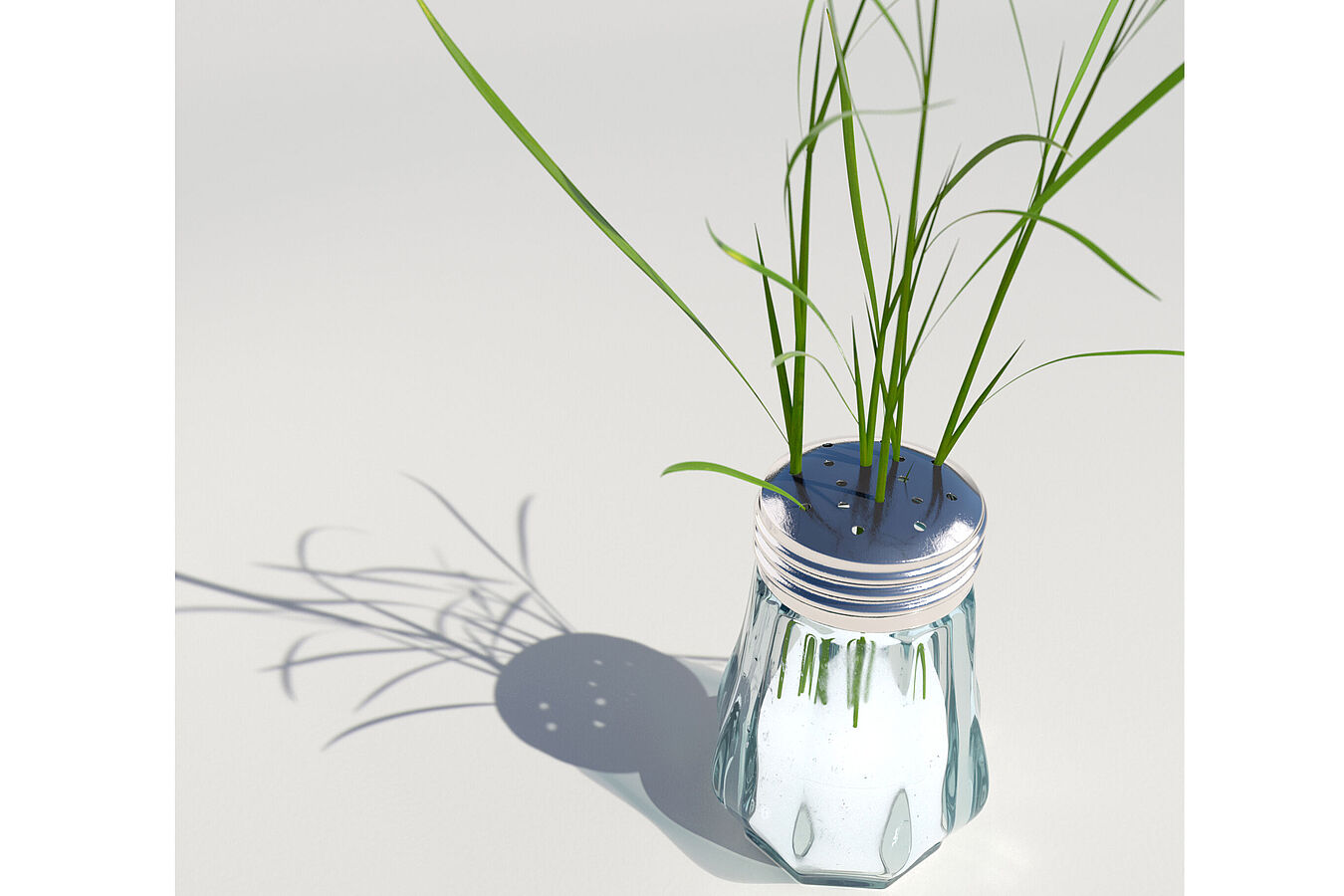The special feature of this protein: It is not only essential for the salt tolerance of plant cells, but also functionally resembles the protein Tau. Tau plays an important role in mitigating the development of Alzheimer's disease.
Proteins are one of the essential building blocks of living tissue - whether in plants or animals. They have a variety of functions and are very different in structure and size; many proteins have not yet been scientifically described. One of them was discovered in 2015 at the Max Planck Institute of Molecular Plant Physiology (MPI-MP) by Anne Endler and Christopher Kesten, researchers in the group of Staffan Persson (now Professor at the University of Melbourne): the protein CC1. This protein is situated within the plant cell membrane and link to microtubules, which contributes to cellulose production. Microtubules are tubular protein networks and part of the cytoskeleton.
Microtubules function as tracks for transport of various molecules and provide vital functions for cells to adhere to substrates, divide and maintain certain shapes. The MPI-MP researchers discovered that the CC1 protein is important for the response of plants to salt stress: Genetically manipulated plants without CC proteins appear to develop normally; however, if grown on a nutrient medium with an elevated salt content, the growth is inhibited. This is because CC1 is central to the stability of the microtubules during salt exposure: "If the plant cells have an elevated salt content, the microtubule network beneath the membrane disappears within two hours but returns after another six hours. Without CC1, the microtubule network decays faster and is then rebuilt, but is no longer stable, "explains Christopher Kesten, now a researcher at the Swiss Federal Institute of Technology (ETH) Zurich in the group of Clara Sanchez-Rodriguez.
The structural biologists working with Arndt Wallmann from Hartmut Oschkinat's research group set out to investigate CC1 more closely. He and the FMP team used Nuclear Magnetic Resonance (NMR) spectroscopy, a method to study the electronic environment of individual atoms, which enables structural and dynamics analysis of molecules. The CC1 protein consists of three parts, of which the cytosolic part that is situated directly under the cell membrane can interact with the microtubules. By means of NMR analysis, Arndt Wallmann was able to describe the molecular properties of the protein in more detail. "We found that the cytosolic part of CC1 has no rigid structure and is thus very dynamic. This can be an advantage in stressful situations - for example when cells are exposed to salt," explains the researcher.
The researchers found that CC1 simultaneously binds microtubules at multiple regions, meaning that different areas of the protein are simultaneously involved, and thus it can directly regulate the reorganization of the microtubule network. The protein behaves dynamically and can move along the microtubules. To further investigate the function of CC1, Christopher Kesten introduced mutations into the protein that interfere with the microtubule interaction. These mutations allowed the researchers to pin-point several amino acids that are important for the binding of the CC1 to microtubules.”
The results of the international team consisting of members of the FMP, the ETH Zurich and the University of Melbourne are an important contribution to basic research - and could also offer new perspectives on the exploration of an incurable human disease: "Our research became even more exciting when we found out that the CC1 protein is very similar to a very well-researched protein; the Tau protein, that has an important role in the human brain and is associated with Alzheimer's disease," said Arndt Wallmann. The CC1 and Tau protein are not homologous, i.e. they are not evolutionarily related, but analogous: "We have found an amazing similarity of protein properties, just like when comparing the wing of a bird with that of a bat, which have developed independently, but are functionally and morphologically similar," explains the researcher. Analogously, the Tau protein binds to microtubules in a very similar way to CC1, but in neurons of human nervous tissue. In Alzheimer's disease, deposits of tau proteins affect single cells and then entire areas of the brain, which leads to extensive cell death. The exact role of Tau proteins in the course of Alzheimer's disease is, however, still unclear.
Especially the different structure of CC1 now makes further, comparative research on both proteins exciting: "Comparing the analogues features of CC1 and Tau might help to understand what goes wrong in the Alzheimer affected human brain ," says Arndt Wallmann. In addition, the findings could also be useful for applied plant research, for example to develop crops that are more salt-tolerant and thus able to grow on salty lands.


